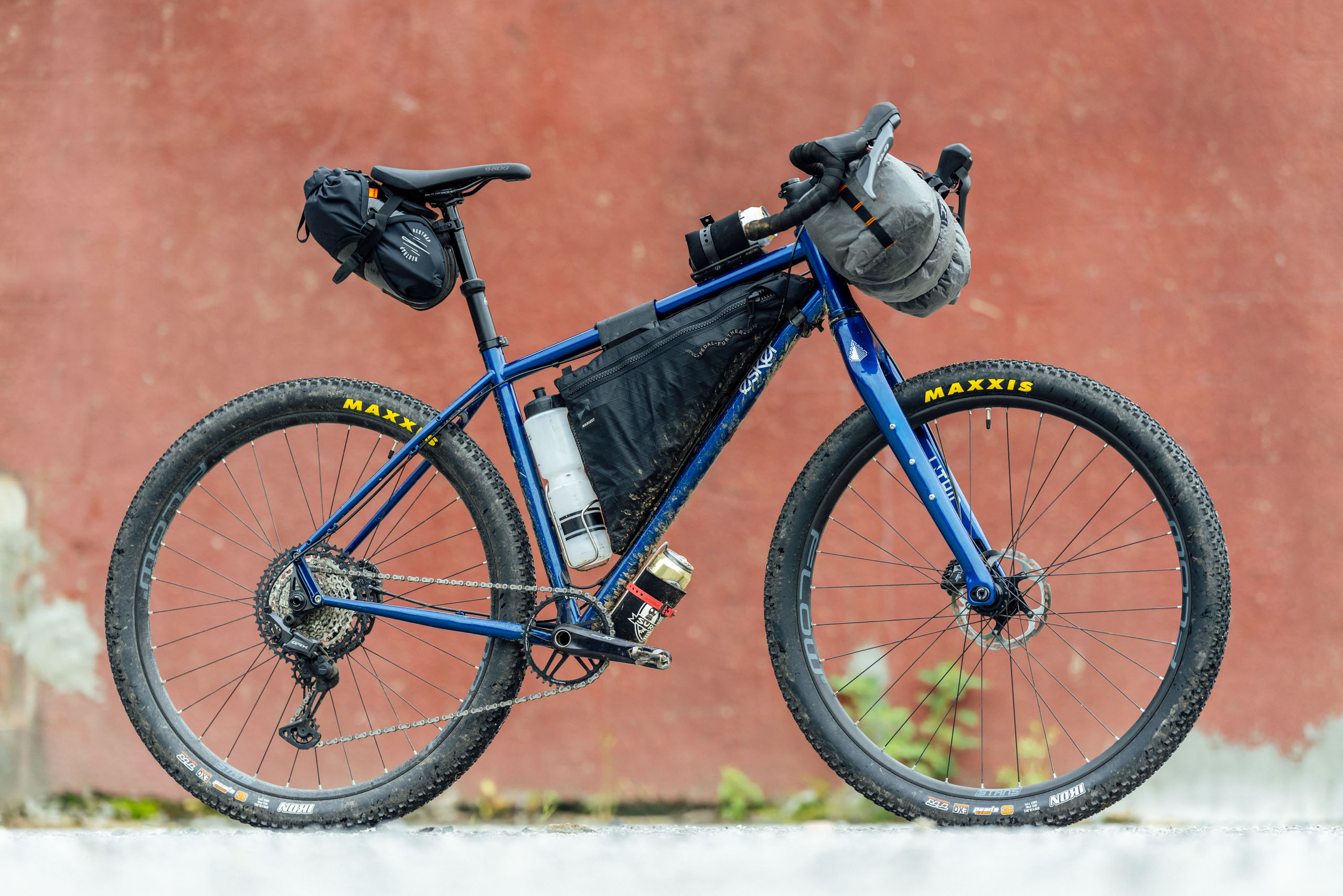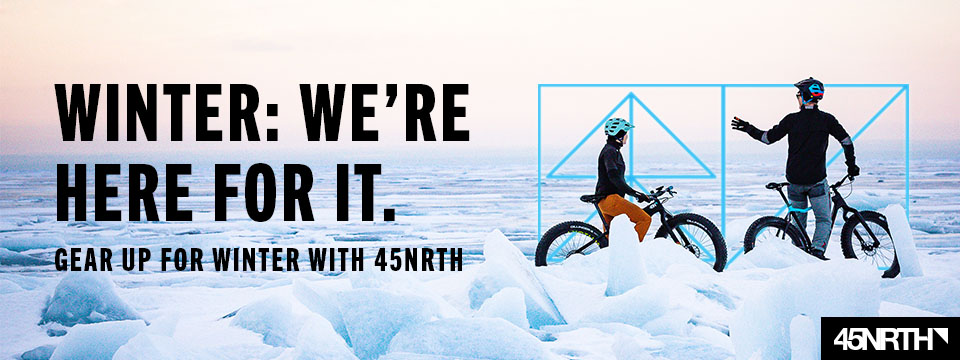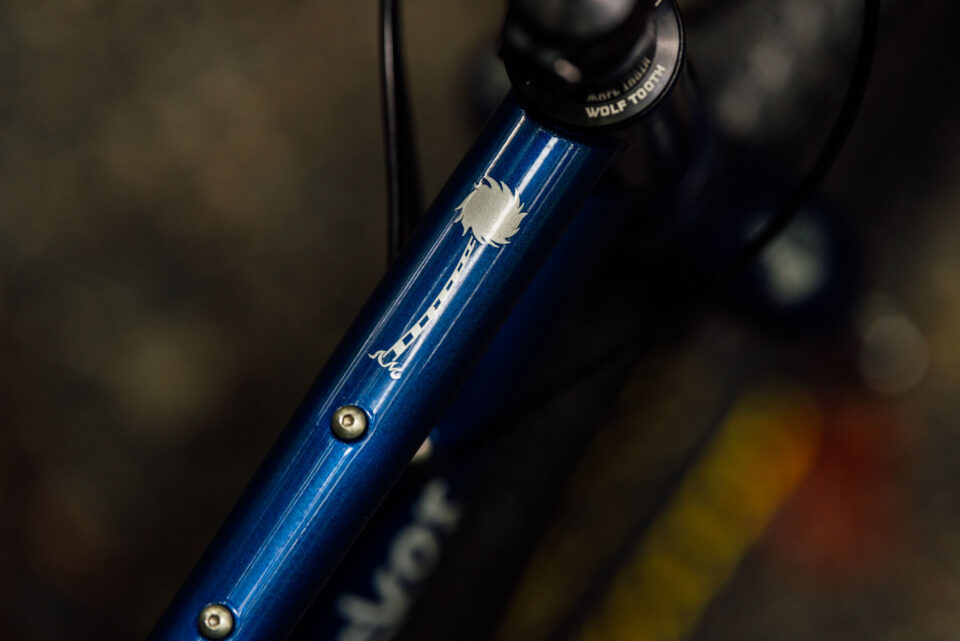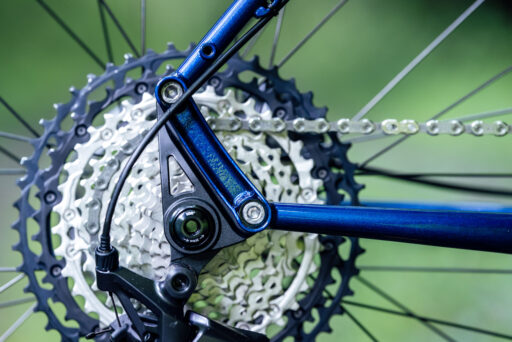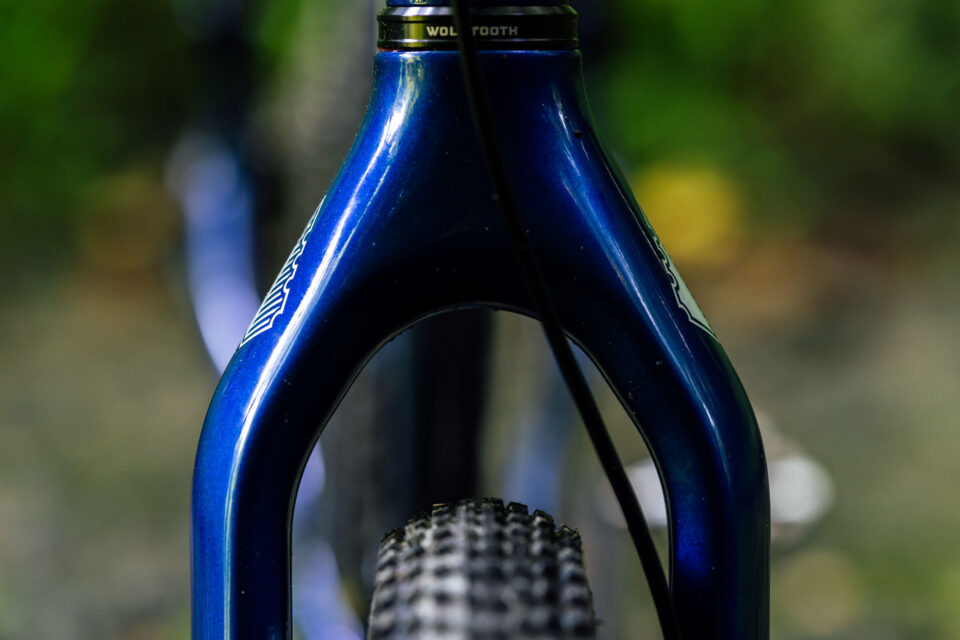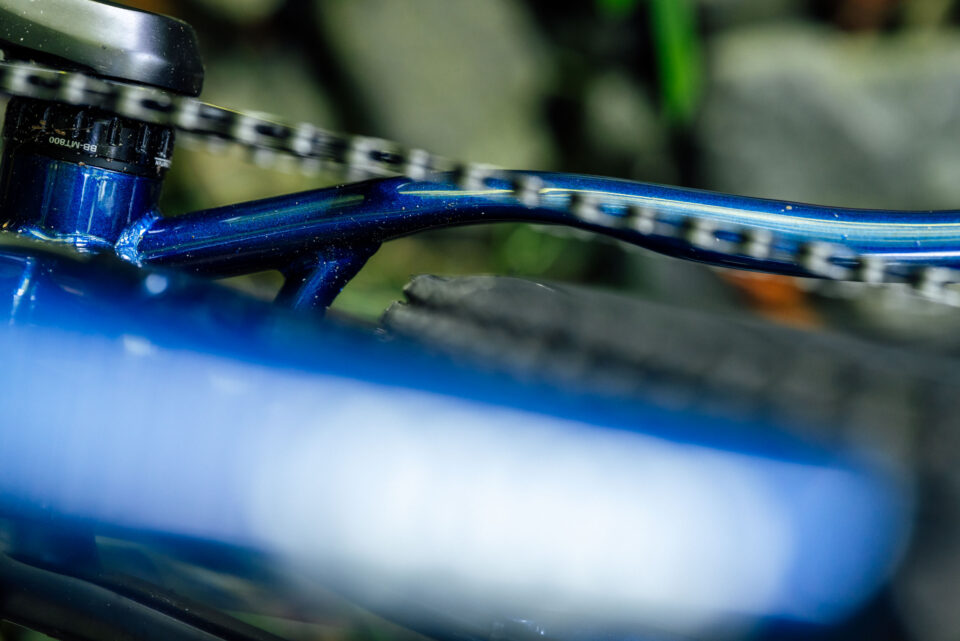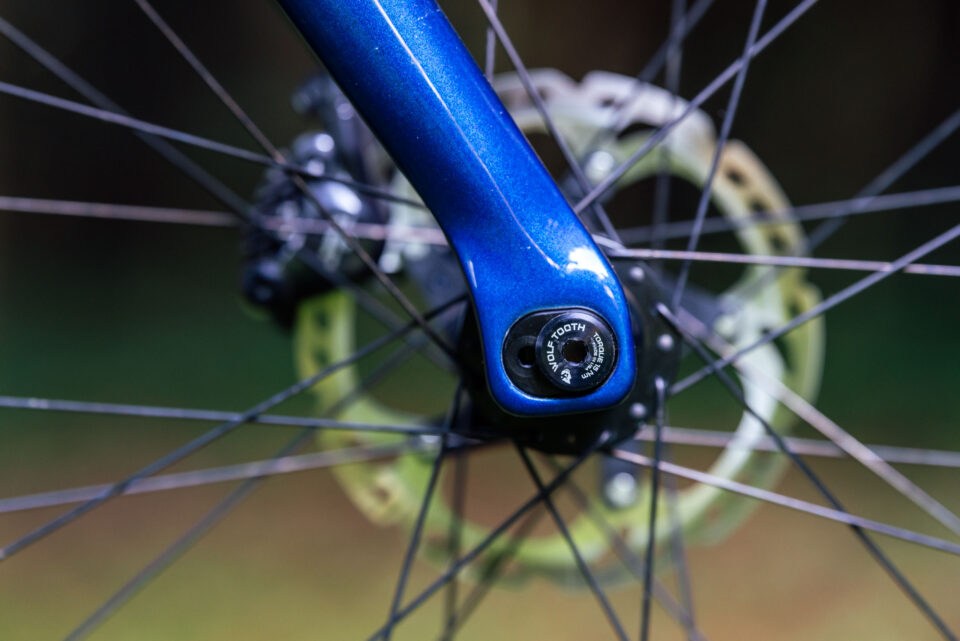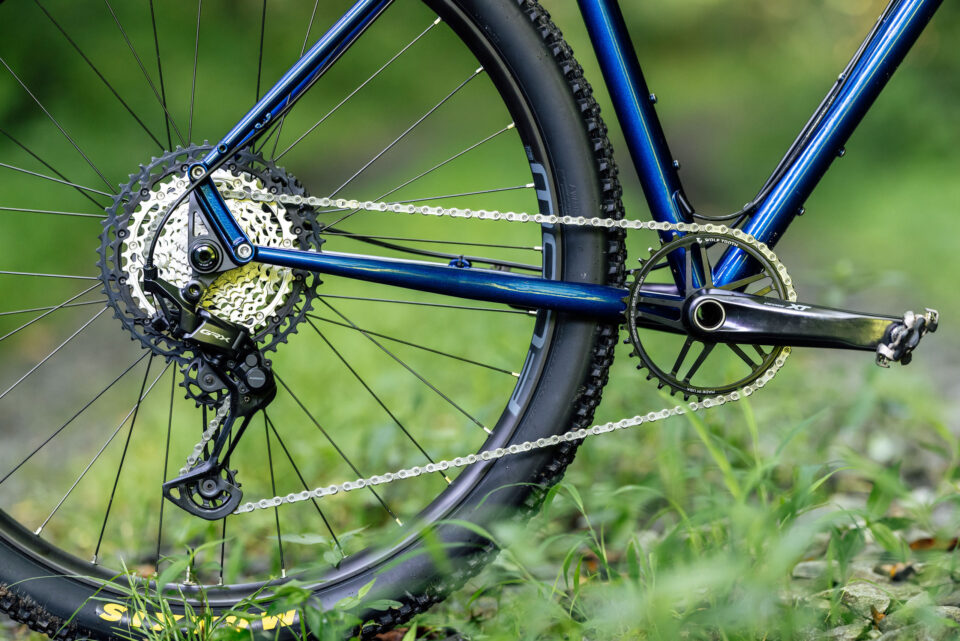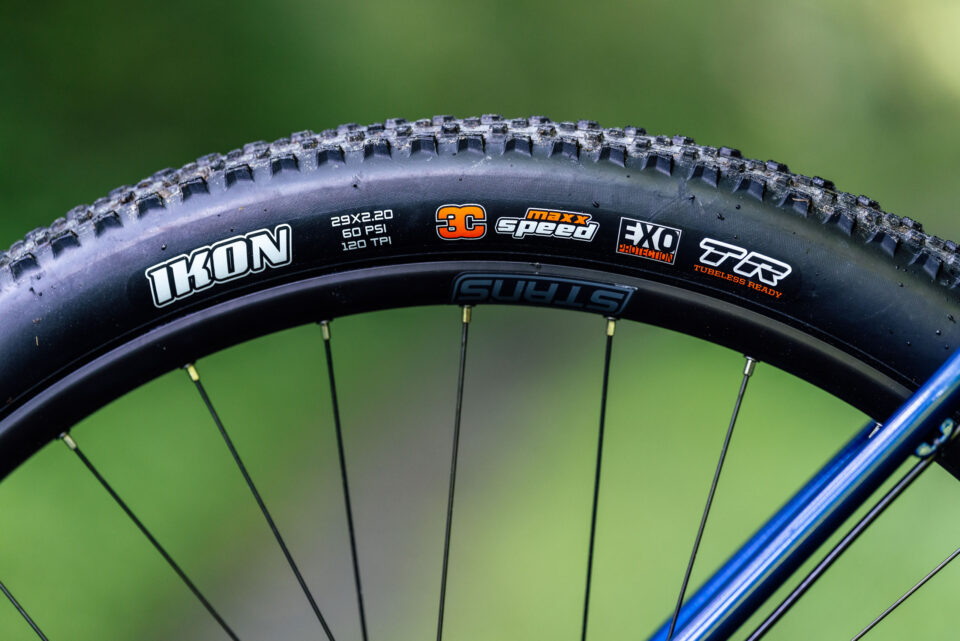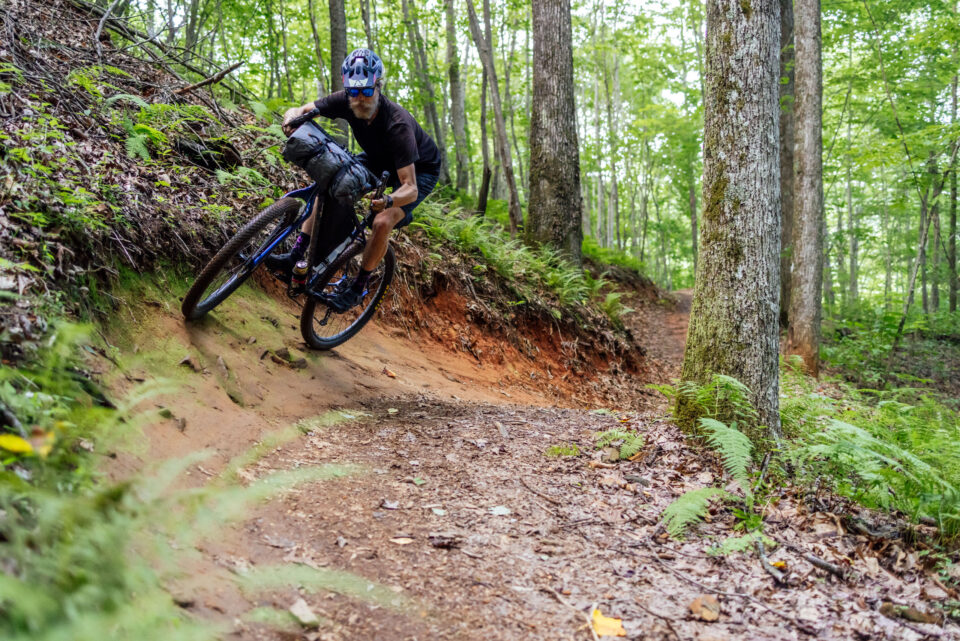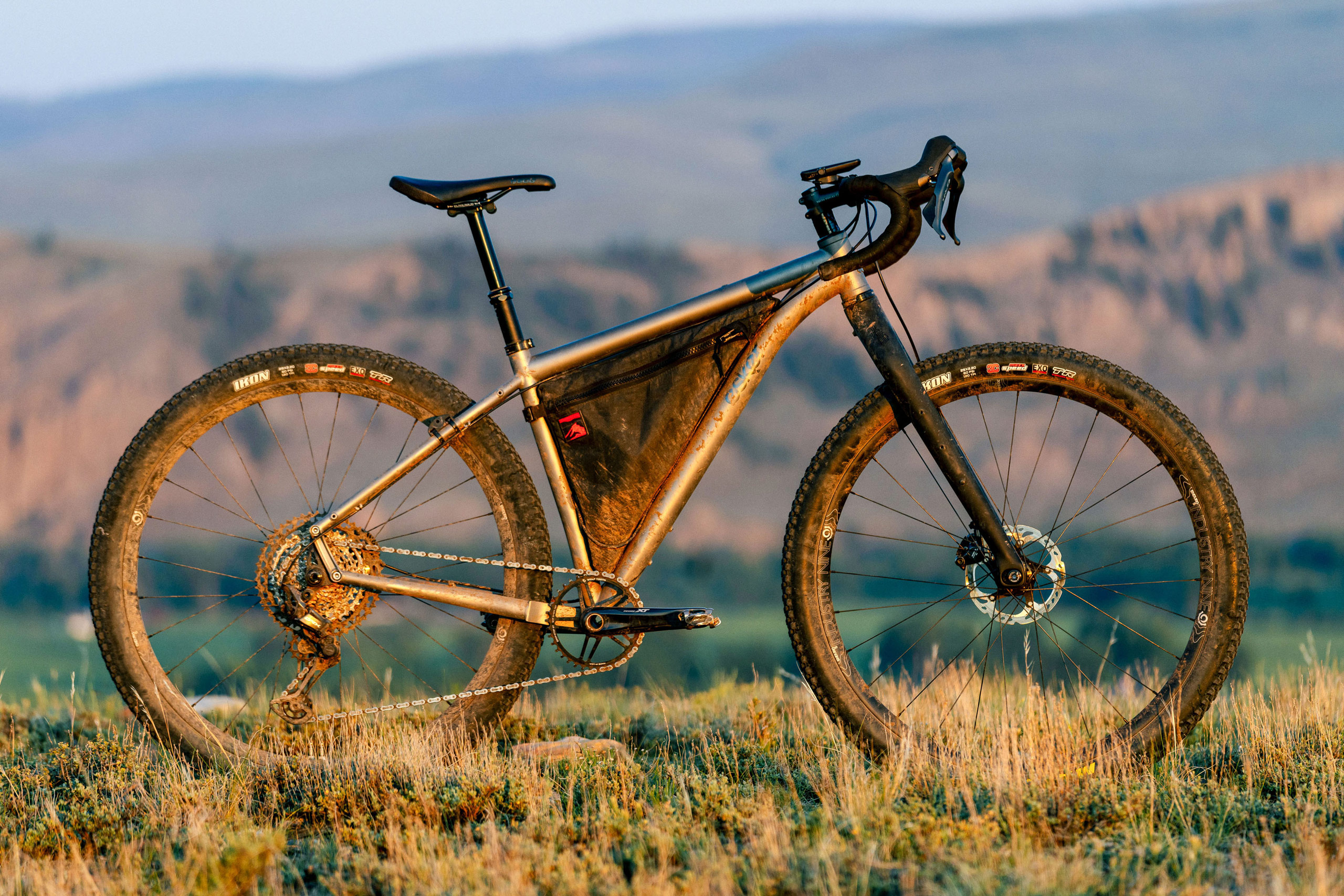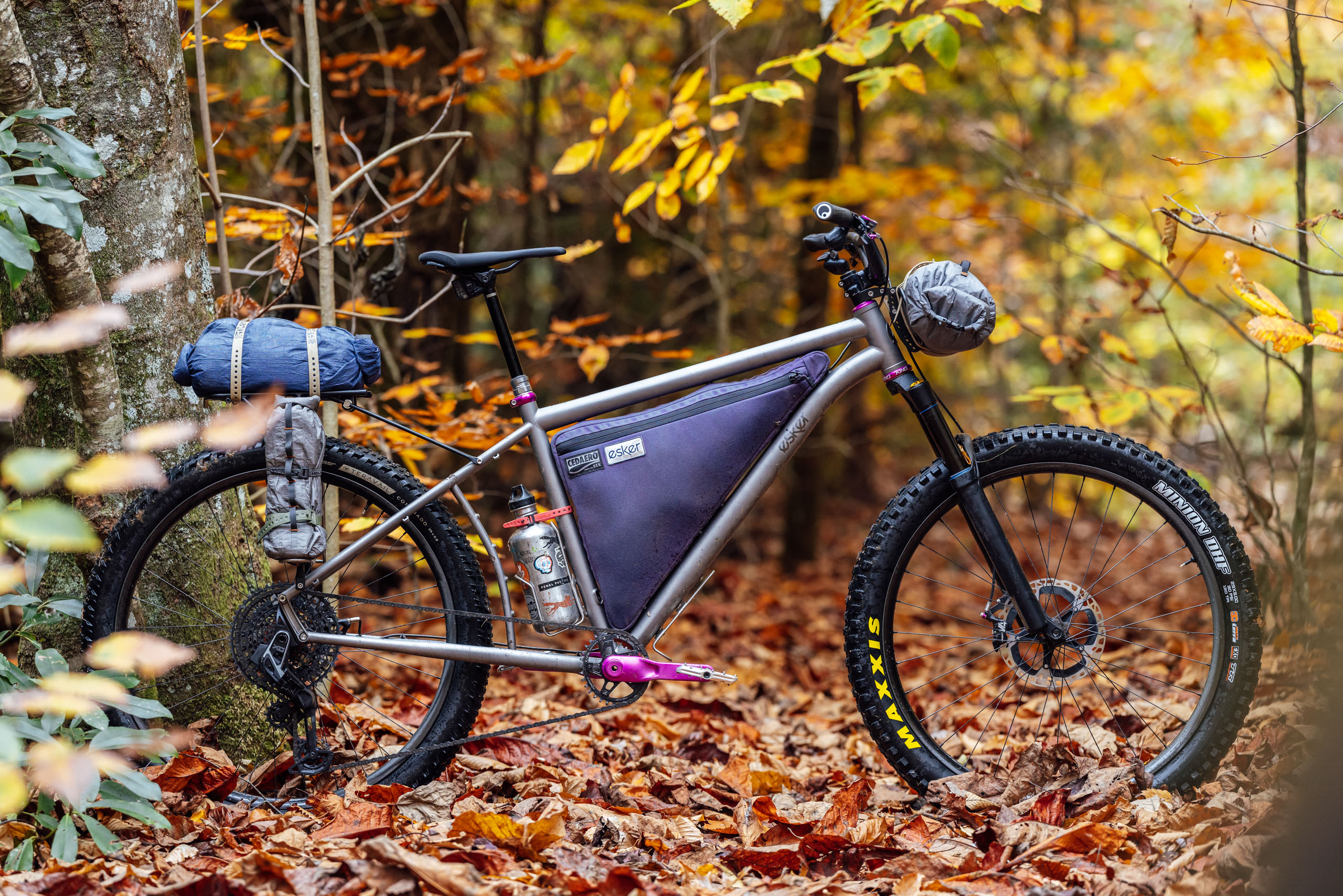Esker Lorax Review: Unless…
Following our review of the titanium Esker Lorax, Logan put in a few months aboard the latest Esker Lorax steel model to see how it handles a variety of trails and dirt roads. Read on for the full review, complete with a comparison to other drop-bar 29ers, pros and cons, and, as always, a full complement of photos…
PUBLISHED Aug 20, 2024
With riding photos by TJ Kearns
Unless somebody cares, nothing is going to get better. This was the core message of Dr. Seuss’s 1971 environmental fable, The Lorax, a story many of us remember. The tale emphasizes the importance of individual responsibility in making the world a better—and simply livable—place. While the story’s focus is on environmental stewardship, the lesson extends beyond that. It speaks to any situation where people care enough to take action, ensuring that something valuable is preserved. A subtle parallel can be almost be drawn to the revival of steel bikes. Once on the brink of obscurity—or so many of us feared—their resurgence is being nurtured by folks who refuse to let them fade away. On some level, Esker embodies this spirit by recently refocusing on what truly matters to them and keeping the flame alive, and by proxy, adding the steel Esker Lorax to the lineup.
Scanning their current bike range, you’ll notice familiar names like the Hayduke and Japhy. However, all the carbon models that the brand formerly offered are gone. They’ve been phased out in favor of an all-metal bike range, marking a return to their roots in backcountry biking and bikepacking. Knowing the founder Tim Krueger, and others on the team, the simplicity of this style of bike and materials is what these folks care about. And, fortunately for us, that means more steel bikes, which have been slowly dying off over the last decade. Obviously, this isn’t analogous to saving the environment, but steel bikes are more long-lasting, and they represent a more justifiably authentic and simple interpretation of the bicycle as a human-powered machine. We’ve already reviewed the Esker Lorax Ti, but we were sure many readers would be interested in hearing our take on Esker Cycles’ recently released and more affordable Lorax steel. It’s a different bike, anyway, and I’ve been riding one over several months for this review.

Along these lines, the unless parable can also be applied to bike innovation, and the entry of the Esker Lorax into an already populated niche. Of course, that’s not exactly why Esker’s latest bike is called the Lorax; they name all their bikes after literary figures whose role in some way is to protect nature—Hayduke, Smokey, etc. But, hear me out. One of the most prevalent “meh” comments we get any time a drop-bar mountain bike is announced is, “Looks like another Salsa Fargo.” I get it, the Fargo was one of the originals in this space, and we’ll give credit where credit is due. However, were it not for brands like Esker, Tumbleweed, Kona, and Salsa caring—as in, caring about innovating this style of bike—we’d have been left with just the Fargo, and maybe, just maybe, this breed of bicycle would have died out completely. The Fargo is fine for a lot of people, but variations on the theme, like the new Esker Lorax, offer subtle differences that might be a better fit for some people, and, generally speaking, help make this genre flourish. Long fable short, in our book, more drop-bar 29er options are always welcome, especially steel ones.
The Esker Lorax Steel Frame
Speaking of steel, before I dig into how the Lorax slots into the burgeoning drop-bar 29er category, let’s have a closer look at the frameset. The Lorax frame is constructed from a custom-drawn, externally tapered, seamless, quadruple-butted, heat-treated 4130 Chromoly tubeset that’s custom-specced for each frame size. Esker clarified this by explaining that every frame size is constructed differently, using a mix of a few different tubes. This tunes each one to the average rider weight for that size and helps with ride quality and properly strengthening the downtube. As Tim Krueger explains, “Most downtube engineering is a result of fork length (a long lever trying to pull the head tube off), and the ISO4210 tests we do involve two different downtubes (one for sizes small and medium, and one for large and XL) that don’t differ in thickness but vary in butt length. This is because we need the same strength regardless of size to pass the ISO4210 testing with a certain fork length, but we don’t need to have lots of extra tube butt hanging out for no reason on the longer frames.”
Other specs on the steel Esker Lorax frame include a 73mm BSA bottom bracket, Boost spacing, a 44mm head tube, a 31.6mm seat tube, and availability in three nice colors: Saguaro (Metallic Green), Burlap (Tan), and Dusk (Dark Blue). It also has internal dropper routing at the seat tube, rounding out a complete set of mountain bike specs. Otherwise, the Lorax has external cable routing for the sake of simplicity. The frame is designed for a 29 x 2.2” tire with clearance for up to 29 x 2.6” rubber. Looking at it with 2.2” tires mounted to 30mm internal width rims, it appears there’d be plenty of space, and even more with the adjustable Portage dropouts.
The Lorax comes stock with a flat-mount Portage dropout that isn’t adjustable, but if you want the ability to adjust chain tension or play with tire clearance and chainstay length, you can purchase their Adjustable UDH Dropouts for $140, which add to the bike’s versatility. The chainstay length with the standard UDH dropouts is 445mm, so swapping to the adjustable dropout adds 14mm of adjustment, or 445-459mm chainstays. These dropouts run a post-mount brake standard and are available to purchase when ordering the frameset. We also hope to see Esker release versions of the Portage dropouts with 142mm axle spacing, which they’ve offered in the past. This, in combination with the versatile Lithic fork, would allow you to run a gravel bike wheelset on the Lorax, should you have one lying around.
Lithic Mountain Fork
Adding to the Lorax’s ambidexterity, the Lorax ships with a full-carbon Lithic Mountain fork, perhaps the most versatile suspension-corrected fork on the market. On first glance, it appears to be a standard 120mm suspension-corrected fork with three-pack mounts on each leg and clearance for 29” x 3.0” tires, but it has a couple of inventive provisions built into it. The fork’s adjustable flip chip allows you to alter the offset by 7.5mm, shifting between 44 and 51.5mm. I switched the offset on the Lorax a couple of times; it only requires a single Allen key once you remove the axle and takes just a few minutes to carry out.
A few other forks also provide the ability to switch offsets, but the Lithic Mountain Fork has another unique feature designed by Wolf Tooth Components’ engineers: interchangeable, machined aluminum dropouts. These can be swapped to accommodate either a 100mm or 110mm hub and work with both post and flat-mount brakes. Four different dropouts are available, tailored to brake mount type and hub width. Because the dropouts are integrated into the same machined aluminum piece that positions the axle, disc brakes do not require adjustment when the flip chip is used to change the offset. The version on the Lorax comes with 110mm Boost, flat-mount dropouts. Personally, I would have preferred the Boost post-mount plates, which would make it easier to switch to a suspension fork.

Build Kit
As for the remainder of the build, the Esker Lorax steel is available as a frameset for $1,600 or a complete. The Lorax I reviewed was new in the box and came with the base component spec that Esker offers for $3,000. The build features 2.2” Maxxis tires, Stan’s Flow S2 wheels with a 30mm internal width rim, a PNW cockpit, and a mixed, mullet-style 1×12 drivetrain with Shimano GRX controls, a 10-51T SLX cassette, and 170mm XT cranks with a 38-tooth chainring. No real complaints there other than the fact that I’d prefer a 34 or 36-tooth ring for bikepacking. The 38 seemed to jive with the cog progression on the SLX cassette, however, and it’s a nice gearing for rides that prioritize gravel and speed.
- Fork: Wolf Tooth Lithic Mountain Carbon
- Headset: Wolf Tooth Components, ZS44/EC44
- Spacers: 30mm
- Stem: PNW Coast Alloy, 70mm
- Handlebar: PNW Coast, 480mm
- Tape: PNW Bar Tape
- Brakes: Shimano GRX Hydraulic, Flat Mount
- Rotors: Shimano RT-86, 160mm
- Dropper/Lever: PNW Loam, 125mm (integrated GRX Lever)
- Saddle: SDG Custom Esker BA3
- Wheels: Stans Flow S2 Comp 29
- Drivetrain: Shimano GRX/XT, 12 speed, 10-51 SLX Cassette
- Cranks: Shimano XT 170mm w/ Wolf Tooth 38t Chainring
- Tires: Maxxis Ikon, 29×2.2
I was fairly content with the build, overall, save a few complaints. First, the GRX brakes squealed like hell from the get-go, and I couldn’t get them to stop. Perhaps the rotors were contaminated, but I’ve heard others criticizing them in the past. Second, the 125mm dropper post is too short for a large. I checked, and I could fit a 200mm Fox Transfer and still have 10mm to play with. With that, I think a 175 or at least a 150 would be a better middle ground for the size large. My biggest grumble with the kit is that I think the size large model should ship with a 500mm wide drop-bar. I’d personally prefer a 520, and the 480mm bar will be fine for a lot of people, but I found that it felt a bit narrow for this bike’s demeanor. This may seem like a matter of personal preference, but there are other reasons that I’ll dig into below. The same goes for 2.2” tires. The Ikons are fine, but 2.35” tires would have been more fitting for the Lorax’s disposition.
Another thing to consider is that it’s not an option to sub the adjustable dropouts because the brake calipers they offer on the complete are flat-mount. For anyone wanting to easily switch to a singlespeed setup, IGH, or just tinker with chainstay length, you’re better off buying the frames where you can specify which Portage dropouts you want.
Fit and Sizing
I got the size large (S3) to test, and looking at the geometry below, there are no real surprises. I’m 6 feet tall (1.83 meters) and have a 75” wingspan (1.91 meters), or +3” ape index, and a 34.5” Inseam (0.88 meters). The S3 fit me perfectly with the stock 70mm stem. It’s actually one of the best-fitting drop-bar bikes I’ve tried out of the box with no modifications.
| Size | S1/SM | S2/MD | S3/LG | S4/XL |
|---|---|---|---|---|
| Effective TT Length | 537 | 560 | 587 | 610 |
| Reach | 365 | 380 | 390 | 405 |
| Wheelbase | 1075 | 1094 | 1118 | 1143 |
| CS Length | 445 | 445 | 445 | 445 |
| Effective ST Angle | 74 | 73.5 | 73 | 73 |
| ST Length | 400 | 460 | 510 | 560 |
| HT Angle | 68 | 68 | 68 | 68 |
| HT Length | 90 | 100 | 138 | 165 |
| Fork Length | 495 | 495 | 495 | 495 |
| BB Drop | 68 | 68 | 68 | 68 |
| Stack | 600 | 610 | 645 | 670 |
| Rider Height | 5’0″-5’7″ | 5’3″-5’10” | 5’6″-6’1″ | 5’9″-6’4″ |
To the Trail
On my first few rides with it, I was surprised to find the Lorax felt considerably snappy. It accelerates quickly and seems to want to get up and go without hesitation. That temperament may have been slightly accentuated by the smaller 2.2” tires, which are the skinniest tires I’ve ridden in a few months, but even after pedaling it dozens more times, loaded and unloaded, I’ll stick to my guns on that feedback. Don’t get me wrong, it’s not the fastest drop-bar bike I’ve ridden, but it certainly holds its own in this category.

As for the frame feel, my first impression was that it was fairly ordinary when considering comfort and general ride quality. However, after pedaling it for a while and comparing it to other bikes, I’d say it’s above average. It has a moderately supple feel that’s not overly harsh, and it’s still solid enough to feel like it’s properly transferring power from the pedals for an always-ready-to-go vibe. Neil mentions that the Lorax Ti has this in spades and claimed it was one of the fastest bikes he’s ridden, enabling him to nab a few personal bests on his local rides. I can’t say that the Lorax Steel gets those topmost marks, but it seems markedly quick and lively. The Lithic fork generally complements this. It’s not the most supple carbon fork I’ve tried, but it’s comparable to other high-end carbon mountain bike forks, and it feels solid and trustworthy, to boot.
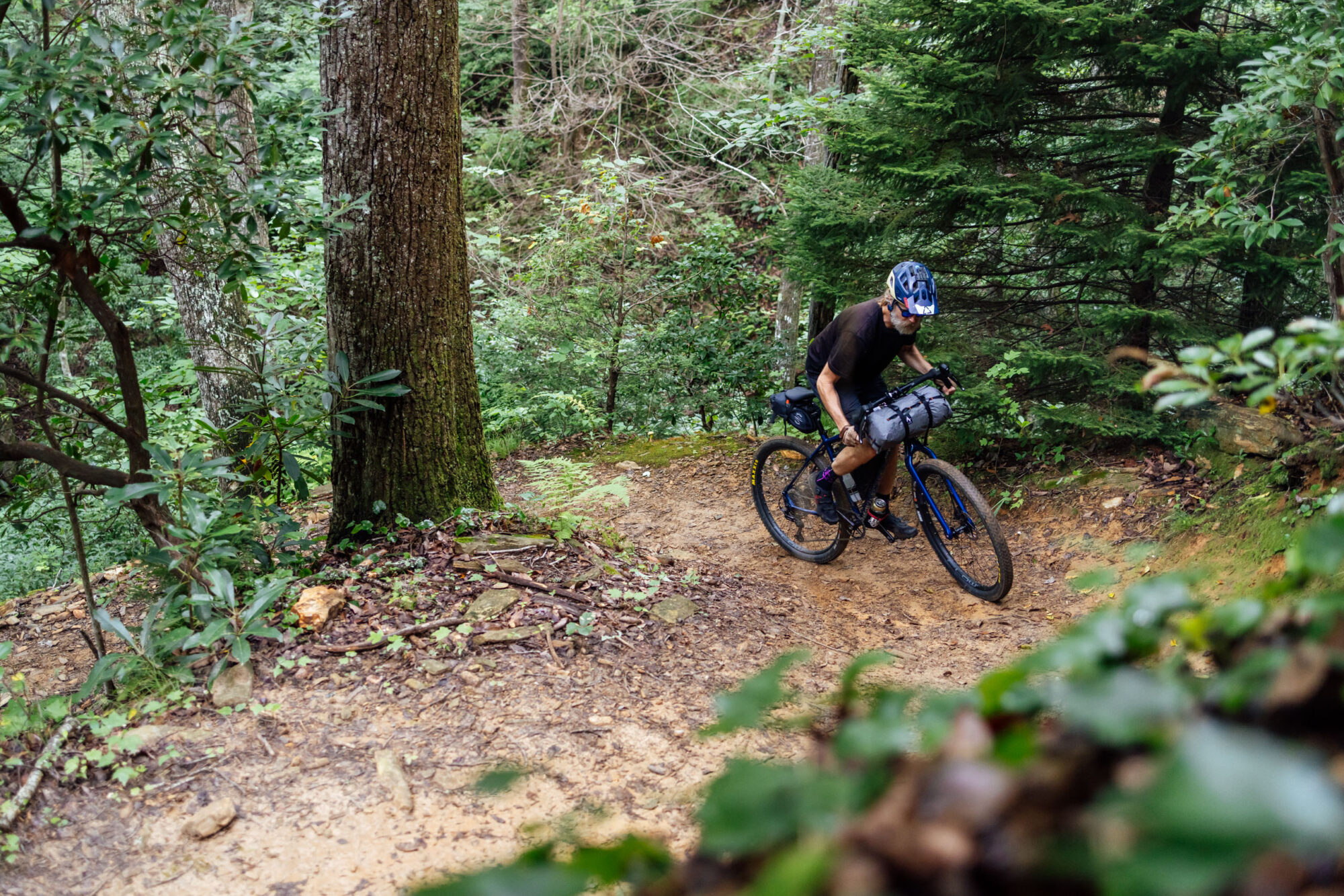
Climbing and Descending
As you can see in the geometry comparison chart below, the Lorax’s angles and measurements are relatively consistent with most of the well-known bikes in the drop-bar MTB category, save two numbers that are significant outliers. Those are the head tube angle and, by proxy, the trail. I was a little surprised to see Esker shave off a full degree from the popular 69° HTA that’s prevalent in these bikes. That’s not slack when compared to hardtails, but it’s pretty slack for a drop-bar mountain bike. I didn’t think much about it until I was well into my first climb with this bike. Once the grade got steep and I began climbing out of the saddle, the Lorax’s front end started feeling a little wobbly and took some work to keep in check. It’s not apparent when seated, but it’s noticeable and feels a tad cumbersome when pedaling out of the saddle in the hoods, which I like to do. I thought it was something I’d get used to, but that wasn’t totally the case.
| Metric | Esker Lorax (L) | Cotic Cascade (L) | Salsa Fargo (L) | Salsa Cutthroat (58) | Tumbleweed Stargazer (L) | Kona Sutra LTD (56) |
|---|---|---|---|---|---|---|
| Stack | 645 | 633 | 671 | 645 | 653 | 627 |
| Reach | 390 | 432 | 385 | 395 | 389 | 400 |
| Top Tube Length (Ef.) | 587 | 613 | 590 | 580 | 595 | 592 |
| Head Angle | 68° | 69° | 69° | 69° | 69° | 69.5° |
| Seat tube angle | 73° | 74° | 73° | 74° | 72.5° | 73.5° |
| Fork Offset | 44/52 | 44 | 51 | 51 | 55 | 55 |
| Trail | 102/94 | 96 | 88 | 86 | 82 | 79 |
| BB drop | 68 | 70 | 70 | 70 | 63.5 | 72 |
| Chainstay length | 445 | 438 | 445+ | 445 | 450 | 445 |
| Wheelbase | 1118 | 1136 | 1110+ | 1110 | 1120 | 1106 |
That being said, this quality wasn’t as as apparent when in the drops, which by nature is a wider position. Of course, standing and climbing in the drops isn’t sustainable for a long-legged fella like me, but it made me realize that an easy fix would be wider drop bars. The 480mm bars that it came with felt narrow to me; they’re the narrowest bars I’ve used in a while and I’m confident that 520mm Curve Walmers or Tumbleweed Big Dippers would remedy the situation. I don’t think this is a deal breaker on this bike, by any means; the wheel flop wasn’t detrimental when just pedaling along while seated. And it’s worth noting this analysis is based on comparing it to other bikes like it. I ended up moving the fork offset to the long position, which toned it down when climbing out of the saddle, but it also made the steering a little more busy when just spinning up hills. On Neil’s size medium test bike, he kept the fork in the short offset position and had no complaints about the steering whatsoever, even out of the saddle.

On the flip side, the Lorax’s high trail and 68° head tube make it a magical descender, one that I would confidently deem best in class out of the ones I’ve ridden, which are numerous. I can safely say that that extra degree—in concert with other well-placed angles and numbers—makes it the most confident drop-bar bike I’ve ridden when it comes to railing down hills. It’s an absolute blast on chunky gravel, rutted two-track, and fast singletrack, even. On one ride, I had stopped to eat a few wild blackberries toward the top of a rutted gravel road I ride regularly. When I started the descent, I was going kind of slow, and some dude with a racey full-suspension kit passed me in a rude manner, and didn’t reply when I said hello, which is a big peeve of mine. After that, I decided to follow his tail. I ended up staying within 30 feet of him all the way down the long descent, hitting some precarious speeds. I was blown away at how well the Lorax took it in stride. It seemed to stick to everything, command corners, and basically soak up anything that came its way. It’s impressive, to say the least. That was the first of many fast descents I’ve done on this bike, enjoying every minute of each one.
Steering and Handling
Aside from the out-of-saddle steering on this bike, I was generally impressed with the stability and handling of my size large Esker Lorax steel test bike. It handles well at speed, and even with a 445mm chainstay length, I found that it felt very playful when compared to other bikes in its class, such as the Stargazer and Cutthroat. It seems to have a little more zing in its step, yet it’s still very balanced and stable when slowly churning along the trail. I’d be keen to try the longer, adjustable portage dropouts, as it should be even more solid when the chainstays are stretched out to 452-466mm.

While out Bikepacking
Between the frame and fork, the Lorax has 25 mounts, all accounted for, allowing plenty of different gear-carrying options. That includes provisions for a rear rack, fenders, a direct-mount top tube bag, and three-pack mounts on both the top and bottom of the downtube and each fork blade. The only thing it really lacks is a fork crown bolt and dedicated front rack mounts, but I think that speaks to what this bike is all about.

I set it up with a Rogue Panda Blue Ridge Handlebar Harness for the overnighter that begat many of the photographs you see here. That eliminated the need for a steerer tube strap and kept the bag away from the paint. The large-diameter Mountain Laurel Designs Ultra X dry bag had no problem carrying a sleeping pad, three-person Zpacks tent, quilt, and pillow between the 480mm bars. This could easily be swapped out for a top-loader bag, although you’d want to put some frame protector tape on the fork crown or wherever the bag/strap makes contact with the frame to avoid any damage, especially since there are no rack provisions on the Lithic Fork.
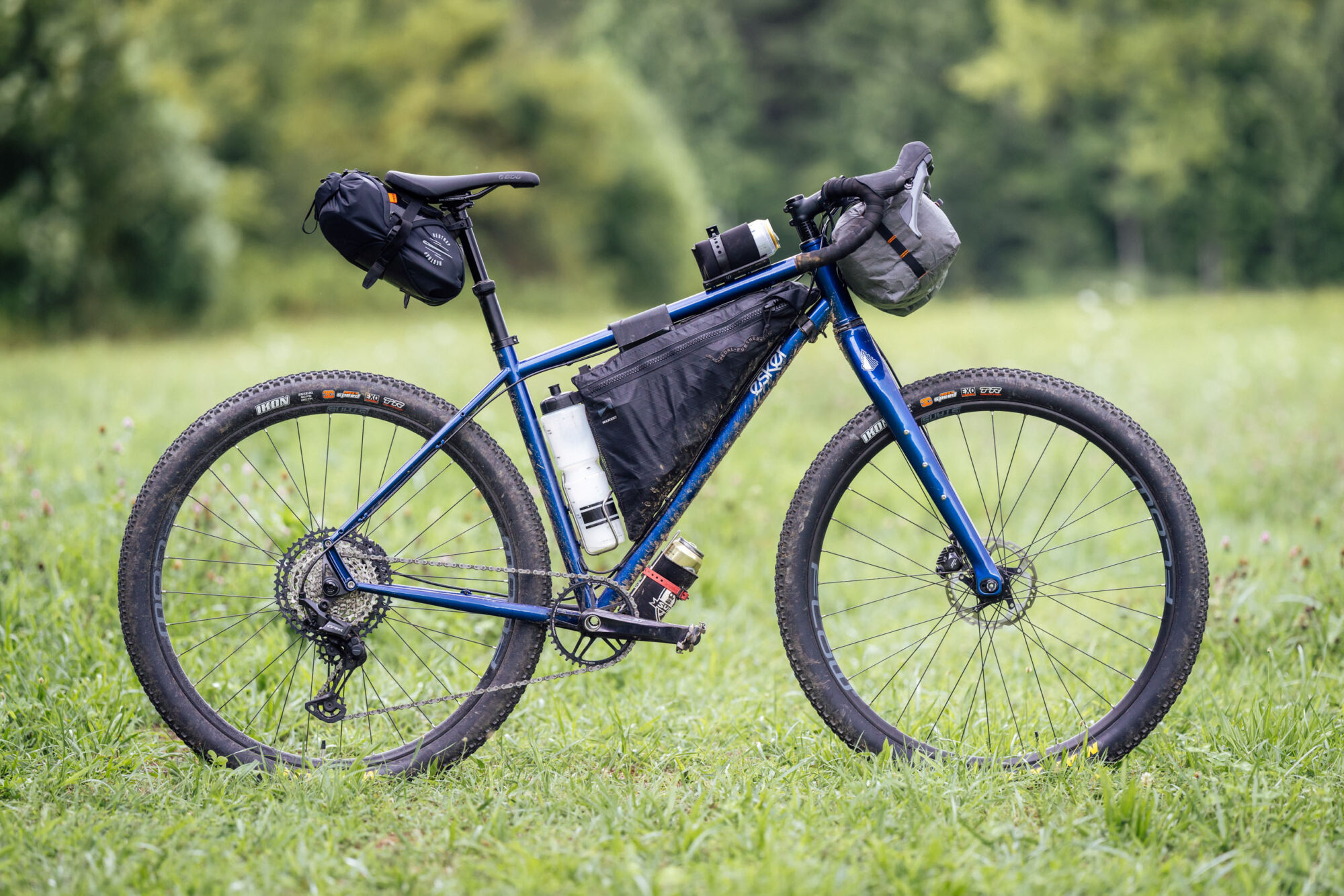
For the rest of my gear, I used a small seven-liter Restrap Race Saddle Bag and an old wedge frame bag from Rockgeist that was originally made for the Kona Unit X I tested. It was nearly a perfect fit and held my camp kitchen, a Helinox Zero chair, tent poles, tools and lights, a water filter, and a couple of other odds and ends. The wedge left room for a full one-liter bottle on the seat tube, and mini cargo cages on the down tube and top tube carried some libations for the evening.
By and large, that was a fairly light setup—even with the beers and camp chair—but I think it’s a good middle-of-the-road example of what this bike does best. Once loaded up, the Lorax felt great. It still had that quick and nimble tenor, and the steering was tempered a little. It felt solid enough that I’m confident it could easily handle a medium-heavy, rear-weight-biased load—think adding a rear rack and small panniers to this setup, which would be well-provisioned for touring longer routes like the Eastern Divide Trail. Or, it could be outfitted with a race-oriented kit for a more mountain-bike-oriented route—like the Silk Road Mountain Race—for someone who prefers drop bars and wants added control for rough and chunky terrain.

- Model/Size Tested: Esker Lorax steel, size large, Dusk
- Actual Weight: 11.93 kg (26 pounds, 5 ounces)
- Place of Manufacture: Taiwan
- Price: $3,000 ($1,600 for frameset)
- Manufacturer’s Details: Esker Cycles
Pros
- Rips on the downhills and offers the most confident descending prowess on a drop-bar mountain bike, yet
- Fairly snappy, quick, and fun
- Decently supple ride feel in the frame
- The ultimate versatility with swappable dropouts on the fork and rear end (flat or post-mount, Boost or gravel spacing, different offsets, etc.)
- Plenty of bikepacking-friendly mounts on the frame
- Lovely colors, both blue and “Lorax green”
Cons
- The front end can feel a little unwieldy when climbing, particularly when pedaling out of the saddle
- I’d prefer the adjustable dropouts with post-mount brakes over the fixed UDH and flat-mount calipers
- No fork crown mount
- 2.2” tires and 480mm bars make it seem a little under-gunned for what it is; 2.35” and 500-520mm bars would be ideal for the size large, in my opinion
Wrap Up
If you’ve made it this far into the review and are still curious about who the steel Esker Lorax is for, I could easily wrap things up by describing it as an exceptional drop-bar bike, best suited for folks with a mountain biking background eager to explore something new. While it shares similarities with other drop-bar 29ers designed for bikepacking and off-road adventures, the Lorax stands out with its one-degree slacker head tube, prioritizing confidence and control on rough dirt roads and trails, especially when tackling more challenging terrain at speed. It’s also a surprisingly fast bike with a relatively smooth ride quality, and it checks a lot of boxes for versatility, particularly if you’re building it from a frameset with various dropout options at your fingertips.
Some riders may still gravitate toward more conservative bikes in this category, but for those who appreciate subtle differences and have a propensity toward drop-bar bikes that reside further to the right within the pavement > singletrack capability spectrum, the Esker Lorax’s will likely be seen as an upgrade. This bike exists because someone cared enough to create something that pushes the boundaries a little, offering a unique take and growing the list of options.
Further Reading
Make sure to dig into these related articles for more info...
Please keep the conversation civil, constructive, and inclusive, or your comment will be removed.







